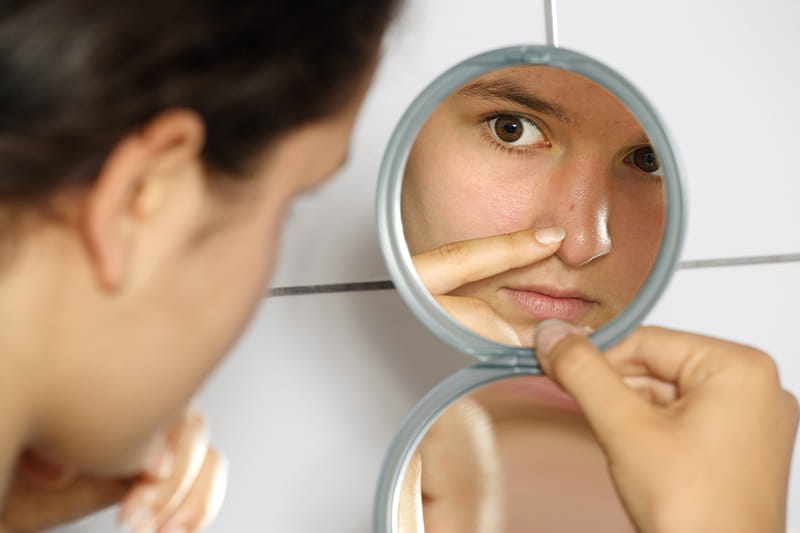EADV 2024: Low Doses Isotretinoin: Risk/Benefit Ratio
Speaker: Vincenzo Bettoli
The topic of low doses of isotretinoin centered on the balance between risks and benefits. Low doses were generally defined as lower than the standard dosage of 0.5 to 1.0 milligrams per kilogram daily. However, some definitions suggested that low doses were lower than the highest tolerated dose for individual patients. Each patient had a personal level of drug tolerability due to differences in metabolism and other physiological factors.
Low doses could be administered continuously or intermittently, depending on the patient's weight and metabolic profile. These doses were calculated as milligrams (mg) per kilogram (kg) per day or as a fixed daily dosage, such as 20 mg per day for all patients. The approach often started at a low dose, gradually increasing until the highest tolerated dose was reached. High initial doses exceeding 1.0 mg/kg/day were sometimes reduced when side effects became intolerable. Different formulations of isotretinoin and its equivalents varied regarding mg per kg per day calculations and fixed dosages. Weight played a crucial role in dose determination, as 20 mg could correspond to 0.4 mg/kg/day in one patient, while 15 mg might correspond to a different ratio. These differences had to be carefully considered during treatment planning.
The highest tolerated dose (HTD) is the maximum dose a patient can handle without experiencing intolerable side effects. For instance, in cheilitis cases, the drug's efficacy was dose-dependent. Achieving an effective treatment outcome while managing side effects was essential to ensuring patients' quality of life. The frequency of acne flares had been a major concern among isotretinoin patients, with flares closely related to dosage. A study examining flares found that starting with a low dose of 0.1 to 0.2 mg/kg/day, followed by a progressive increase in the HTD, reduced the number and severity of flares. The study defined a flare as a more than 30% worsening in acne severity and lesion count. The dose was increased every 7 to 15 days, depending on the type of acne. However, low persistent doses should not be viewed as permanently low. The low dose was the starting point, and treatment would continue until the patient reached their highest tolerated dose. If a patient’s condition worsened and they could not tolerate the prescribed dose, treatment had to be adjusted accordingly.
A study published in Dermatology Journal 2009 found that a daily dose of 0.5 mg of a particular medication significantly reduced acne flares by approximately 50%, with notable efficacy in patients with acne on the trunk. The study also observed that the dosage effectively managed cutaneous side effects, including those affecting the skin, eyes, and lips. For example, an 80 kg patient with grade 3 cheilitis was able to control their lip condition with a daily dose of 30–40 mg of the medication. The 0.5 mg daily dosage was the most effective for reducing flares.
The severity of cheilitis varied, with 100% of patients tolerating conditions A and B, which included dryness and scaling without fissures. However, flares remained a concern. A 20-year-old male had experienced a severe flare while on oral isotretinoin, which was subsequently discontinued and treated with lymecycline and systemic corticosteroids. The flare improved, though the acne severity remained unresolved. Various treatments, including a double dose of lymecycline combined with corticosteroids, trimethoprim, dapsone (DDA), doxycycline, rifampicin, and azithromycin, were either ineffective or not tolerated by the patient. The medical team had two options: repeat therapies at different doses or reintroduce oral isotretinoin at a very low dose. The first option involved restarting oral isotretinoin, but the dosage was extremely low. Despite initial concerns from both the patient and his mother about reusing isotretinoin, the team convinced them to try a cracker method of administration. After one week, no side effects were observed, and the dosage was gradually increased to a daily dose of 10 milligrams, which the patient tolerated well. This case suggested that initiating isotretinoin at a very low dose with a gradual increase could be a viable option in similar situations.
The literature indicated various dosage options for isotretinoin, including low continuous, intermittent, standard, and high continuous doses. The sixth option, with the highest HTD scores, was supported by the European Dermatology Forum (EDF) guidelines published in 2016. However, no specific referral advice was provided on the optimal dosage. The American Academy guidelines suggested that daily dosing was more effective than intermittent dosing, though no particular recommendation was made for the best dosage. Factors related to the drug brand could have influenced the prevalence of side effects, as approximately four companies were producing isotretinoin, and there might have been differences in the final product. The benefits of low-dose isotretinoin included well-tolerated or absent side effects, reduced incidence and severity of flares, and better skin tolerance to procedures such as lasers or peelings. However, the risks of low-dose treatment included a longer time to achieve skin clearance, more frequent relapse, and the need for repeated courses of isotretinoin. The long-term duration of therapy with isotretinoin was equivalent to the long-term duration of pregnancy prevention programs for contraception in females. High-dose and low-dose isotretinoin were equally effective, but the skin tolerated low doses better.
Relapse in acne treatment is a complex concept with varying definitions. Some studies focused on the appearance of a few lesions, while others considered a return to pre-isotretinoin acne severity or the need for further pharmacological treatment. The variability made it challenging to compare results across studies. One older study compared three dosages of isotretinoin over 16 weeks, finding that all were equally effective in clearing acne. The relapse rates were 77% for the 0.5 mg/kg group and 42% for the 1.0 mg/kg group, suggesting a higher frequency of relapse with lower daily dosages. The American Academy Guidelines of Care for the management of Acne vulgaris also addressed these concepts. A 1993 study by Professor Layton also demonstrated that the highest dosage of 0.5 mg/kg reduced the relapse rate to 22%. In contrast, the lowest dosage of 1.0 mg/kg resulted in a 39% relapse rate.
The risk factors for relapse in acne treatment included strong family history, prepubertal age, young age, hyper seborrhoea, hormonal imbalances such as polycystic ovary syndrome (PCOS), localization of acne on the trunk, patient age, being female over 25 years, and the presence of microcomedones. Generally, low-dose acne treatment was found to carry more risks than benefits. Since patients' metabolism and drug bioavailability varied, personalizing treatment was crucial. A low dose needed to be defined in milligrams per kilogram per day rather than a generalized dosage of 20 mg daily for all patients. This one-size-fits-all approach could have been misleading, as side effects like cheilitis were often necessary, but their severity should not have compromised the patient's quality of life. Initiating treatment with a low dose and gradually increasing it to the highest tolerated dose was a reasonable compromise and was well-accepted by patients. Clinical experience demonstrated that the duration of therapy was as significant as the daily dose.
The low dose of 0.1 gradually increases to the highest recommended dose for patients. After clearing the disease, they typically continued treatment with a clear patient for at least one month before initiating maintenance therapy.
33, European Academy of Dermatology and Venereology Congress, 25-28 September 2024, Amsterdam



